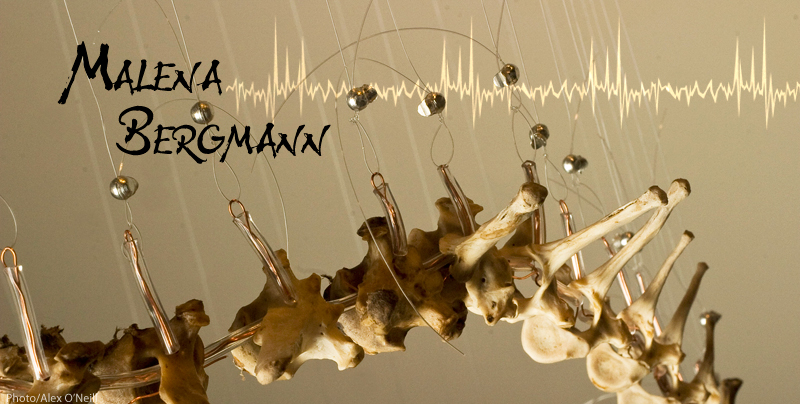Still shots of 16mm experimental film, 2:12 preview
Cinematographer-Chris Thomas
Photographer-Eric Pickersgill
2008-2009 in progress
A young naked woman is tethered to a fleet of handmade boats, connected by medical tubing to her long hair. She moves through bodies of water at various times of day and night, pulling or being pulled by the fleet. She also floats among the boats in whirling and in still pools. She handles, in various scenes, golden turmeric powder, whose color is a major motif throughout the performance. Her interaction with the spice and the fleet in the landscape is the central action in this work. The artists collaboratively explore themes of ritual purification, connection, impermanence, imperfection, and faith through the ‘fringe’ medium of 16mm experimental film.
This film performance was conceptualized as an act of misogi, a Shinto purification ritual using water. Shinto itself is founded on ritualized actions that enhance the participants’ connection with kami. Kami are gods and spiritual beings who exist in the same world as human beings. They are also objects and forces of nature that inspire unusual awe, regardless of whether they are 'good' or 'evil'. Followers of Shinto distinguish between the visible and invisible worlds, but the invisible is seen as an extension of the everyday world, not as a separate realm. Like the objects and actions in this film, kami provides a figurative means of entwining the whole of the natural world, both sacred and material. Like Shinto, most religions use water as an agent of 'cleansing' in order to seek a state of emotional or spiritual alignment. This performance of misogi offers a physical means of merging symbolic objects with the nature of spirit and the spirit of nature.
The woman in this film references characters from mythology and folklore. The Naiads of ancient Greece were one of many classes of nymphs, eternally youthful and beautiful. They were intimately connected to the water they inhabited; without it they would perish. Rusalka, a female figure in East Slavic lore, is also a beautiful water spirit who is, in part, noted for her permanently long and uncontrolled hair. She is intrinsically linked to the water for if her hair were to dry she would die. The ancient Greek Maenads were female devotees of the god Dionysus, usually depicted dancing in ecstatic rituals with their long hair loose and uncovered. Mary Magdalene, in an act of humility and atonement, wet Jesus’ feet with her tears and then wiped them with her hair (Luke 7:38). Also from the bible was the Nazarite Sampson, whose long hair was a sign of his union with God (Judges 13: 5). All of these characters are symbols of connection; to nature, to primal often sexual energy, and to the sacred.
In this work the cinematographer chose to turn his back on 21st century image making and its insistent promise of the superiority of sophisticated digital technology. His choice of 16mm film expresses a rejection of commercial qualities associated with digital forms. He embraced this organic ancestor of video, choosing a do-it-yourself approach with an 'archaic' medium. Even the still photographer used an antiquated camera and ignored the internal light meter. This required more physical interaction with the setting, more awareness of the landscape, more interpretation of the environment. More connection. The film was shot without any dependence on electricity and it was processed by hand. Accidents, debris, and scars from the process are visible in the final product. There is a tenet in experimental filmmaking: if you value the film object, never hand process it. The risk of permanent damage or loss is too great. Choosing risk requires losing control. Relying on intuition. It requires renouncing perfection.
Ultimately, this work is an ode to connection, an exercise in faith, a tribute to risk. The female in this film, her hair, the tubing, the boats, and the spice are all metaphorical linking points between dualities: the body and spirit, man and nature, the organic and synthetic, sexuality and purity, movement and stasis, presence and absence, living and dying. Feelings that the images and action may evolve are given primacy over technical sophistication and perfection in processing. This work’s references to myth and ritual, its physicality and the deliberate choices made during process, provide a glimpse of the human condition, however fleeting. |

